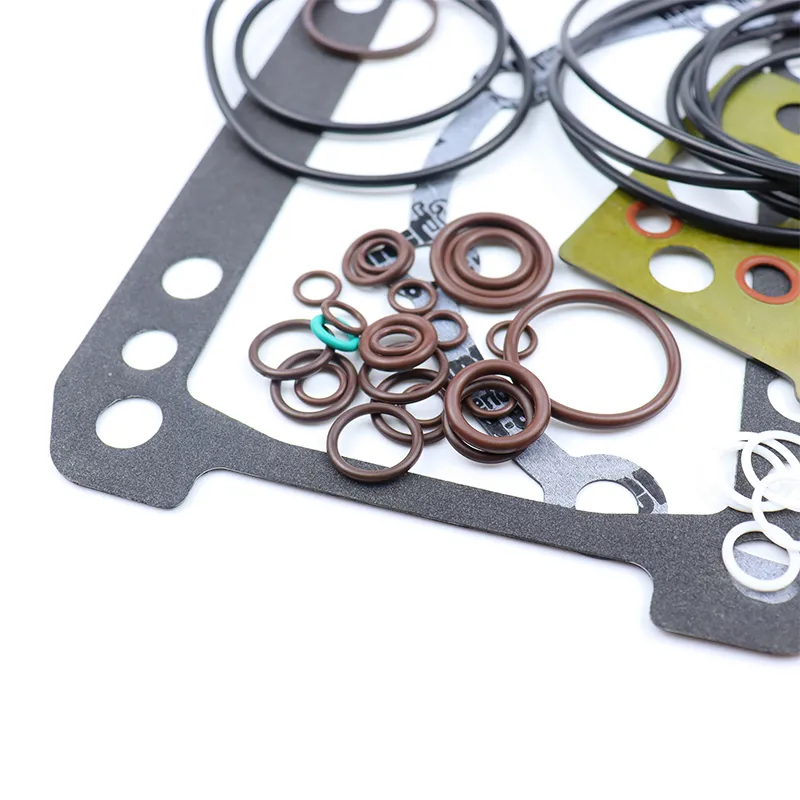дек. . 13, 2024 22:06 Back to list
replacing seals hydraulic cylinder
Replacing Seals in Hydraulic Cylinders A Step-by-Step Guide
Hydraulic cylinders are critical components in various machines and systems, providing the necessary force and motion for a range of applications, from construction equipment to manufacturing machinery. Over time, the seals in hydraulic cylinders can wear out, leading to leaks, reduced efficiency, and potential damage to the system. This article offers a comprehensive guide on replacing seals in hydraulic cylinders, ensuring optimal performance and longevity.
Understanding the Importance of Seals
Seals play a crucial role in hydraulic systems by preventing fluid leakage and maintaining pressure. They also protect the internal components of the cylinder from contaminants such as dirt, dust, and moisture. When seals degrade, hydraulic fluid can escape, resulting in loss of power and efficiency. This not only affects machine performance but can also lead to costly repairs if left unaddressed.
Signs That Seals Need Replacement
Before diving into the replacement process, it’s essential to recognize the signs that indicate seals need to be replaced
1. Fluid Leaks Evidence of hydraulic fluid leaking from the cylinder is the most obvious sign. 2. Decreased Performance If machinery fails to operate at its normal capacity, it may be due to compromised seal integrity. 3. Noisy Operation Unusual sounds during operation can signal that the seals are not functioning correctly. 4. Visible Wear Inspect the seals physically for signs of wear, such as cracks, nicks, or distortion.
Tools and Materials Needed
Before starting the replacement process, gather the following tools and materials
- Replacement seals (ensure they match the specifications of the existing seals) - Wrenches or sockets for disassembly - A hydraulic jack or hoist (if needed to lift the load) - Oil or grease for lubrication - Seal removal tool or scraper - Clean rags and solvent for cleaning - Safety goggles and gloves
replacing seals hydraulic cylinder

Step-by-Step Replacement Process
1. Preparation Start by ensuring that the machine is turned off and safely secured. Remove any pressure from the hydraulic system according to the manufacturer’s recommendations.
2. Disassemble the Cylinder Depending on the hydraulic cylinder design, use appropriate wrenches to remove the cylinder from the machine. Carefully take apart the cylinder sleeve, paying attention to the orientation and position of each component.
3. Remove the Old Seals Use a seal removal tool or scraper to carefully extract the old seals from their grooves. Be cautious not to damage the cylinder wall or other components during this process.
4. Clean the Cylinder Once the old seals are removed, clean the cylinder thoroughly using rags and solvent. Remove any debris, dirt, or residue, ensuring that the surface is smooth and ready for new seals.
5. Install New Seals Before installing new seals, apply a light coating of hydraulic oil or grease to them. This lubrication facilitates easy installation and promotes a tight seal once in operation. Carefully place the new seals into their respective grooves, ensuring they are seated evenly.
6. Reassemble the Cylinder Reverse the disassembly process to reassemble the hydraulic cylinder. Pay attention to the order of the components and ensure all bolts are tightened to the manufacturer’s specifications.
7. Testing Once reassembled, reconnect the cylinder to the hydraulic system and refill with hydraulic fluid if necessary. Restore pressure to the system gradually and monitor for any leaks. Conduct a test run to ensure the cylinder operates smoothly and efficiently.
Conclusion
Replacing seals in hydraulic cylinders is a vital maintenance task that can significantly enhance the efficiency and lifespan of hydraulic systems. By understanding the importance of seals, recognizing signs of wear, and following a systematic approach to replacement, operators can ensure that their hydraulic machinery remains in optimal working condition. Regular inspection and maintenance not only prevent costly breakdowns but also contribute to the overall productivity of the machinery involved.
-
The Trans-formative Journey of Wheel Hub Oil Seals
NewsJun.06,2025
-
Graphene-Enhanced Oil Seals: Revolutionizing High-Pressure Oil Sealing
NewsJun.06,2025
-
Future of Hydraulic Sealing: Advanced Intelligent TCN Oil Seals
NewsJun.06,2025
-
Don’t Let a Broken TCV Oil Seal Ruin Your Day
NewsJun.06,2025
-
Bio-Inspired Dust Seals for Better Sealing Performance
NewsJun.06,2025
-
Biodegradable and Sustainable Hydraulic Seal Materials
NewsJun.06,2025
-
Top Oil Seal Solutions for Your Industrial Needs
NewsMay.22,2025
Products categories
















